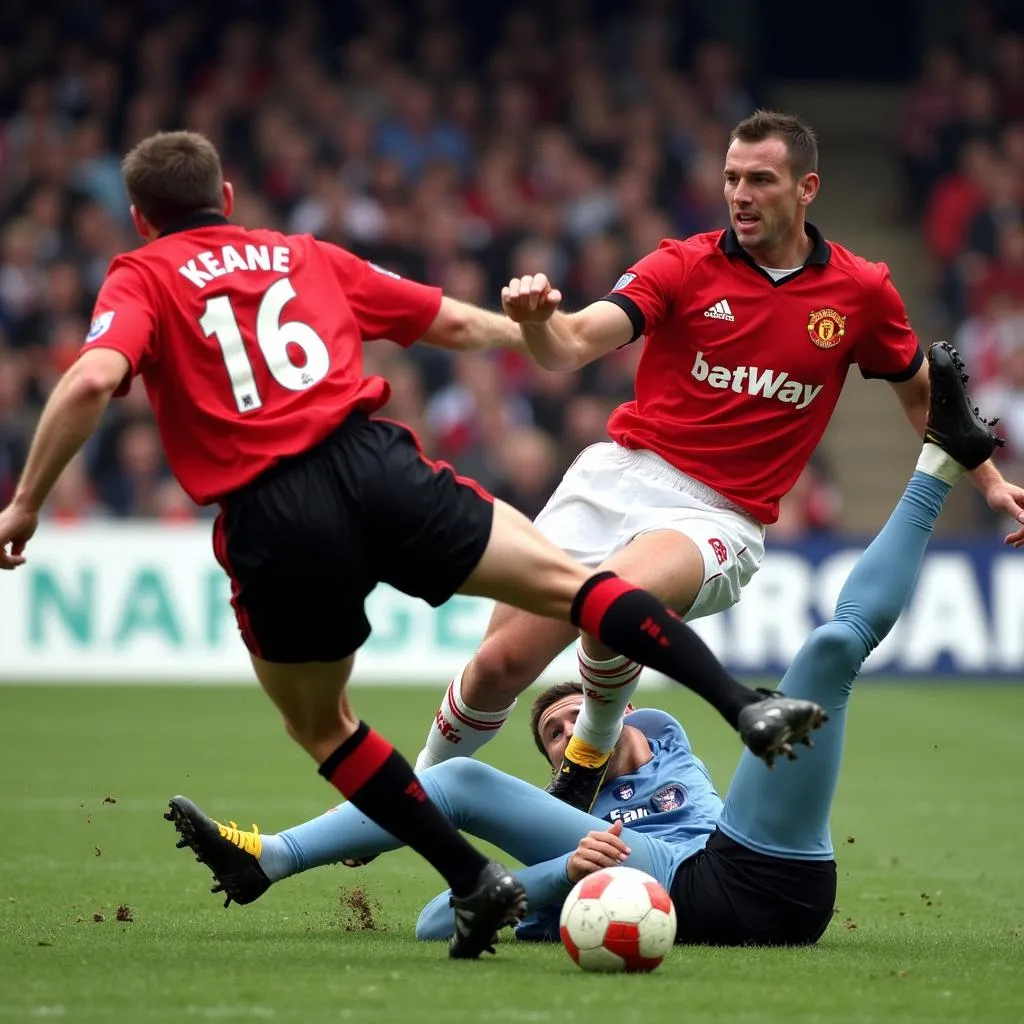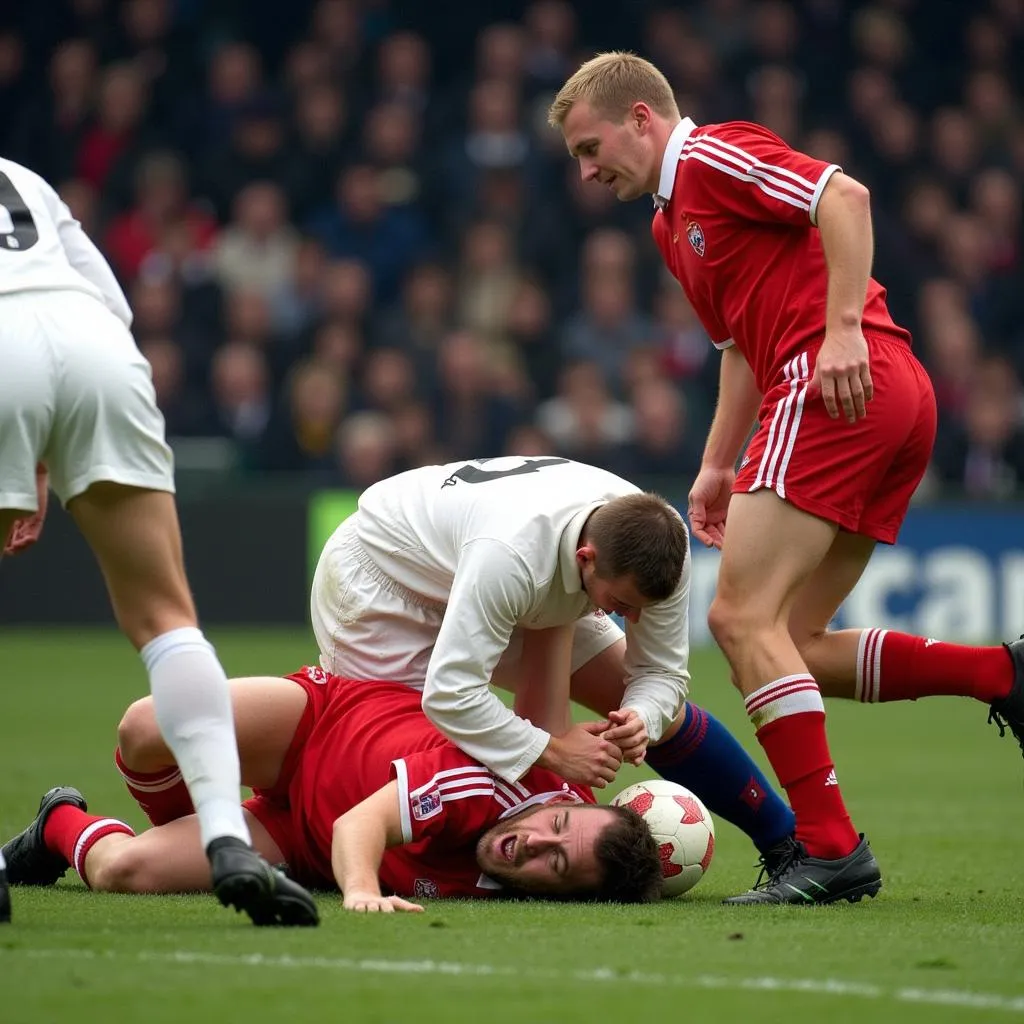Keane Tackle On Alf-Inge Haaland: A Moment That Shook Football
October 9, 2024The infamous challenge by Roy Keane on Alf-Inge Haaland in 2001 remains one of the most controversial moments in Premier League history. This reckless act of retribution not only ended Haaland Sr.’s career but also sparked a heated debate about on-field aggression and its consequences.
The Background of the Infamous Tackle
The story begins four years prior, during a 1997 match between Leeds United and Manchester United. Roy Keane, Manchester United’s fiery captain, suffered a serious knee injury while attempting to tackle a young Alf-Inge Haaland, then playing for Leeds. As Keane lay injured on the pitch, Haaland stood over him, accusing him of feigning the injury’s severity. This incident deeply angered Keane, who vowed to seek revenge.
Fast forward to April 2001. Manchester United and Manchester City, Haaland’s new club, faced off in a heated Manchester derby. With the game nearing its end and Manchester United comfortably ahead, Keane saw his opportunity for retribution. He launched himself into a horrific knee-high tackle on Haaland, who was controlling the ball on the edge of the box.
 Roy Keane's Infamous Tackle on Alf-Inge Haaland
Roy Keane's Infamous Tackle on Alf-Inge Haaland
The Aftermath and Lasting Impact
The tackle was immediately met with a red card for Keane, who showed no remorse for his actions. Haaland, despite trying to play on, was forced off the pitch due to the severity of the injury. This challenge effectively ended his career, forcing him to retire prematurely.
The incident sparked widespread condemnation within the football world and beyond. Many criticized Keane’s actions as premeditated and vengeful, highlighting the dangers of on-field violence. Keane faced a lengthy ban and a hefty fine, further fueling the debate about the appropriate punishment for such reckless challenges.
 Alf-Inge Haaland Suffers Career-Ending Injury
Alf-Inge Haaland Suffers Career-Ending Injury
A Legacy of Controversy and Debate
The Keane tackle on Haaland continues to be a source of debate even today. While some argue that Keane’s actions were unjustifiable and crossed the line of acceptable conduct, others maintain that it was an unfortunate consequence of the heat of the moment in a highly competitive match.
Regardless of the differing opinions, the incident serves as a stark reminder of the potential consequences of on-field aggression and the importance of sportsmanship. The tackle’s legacy continues to cast a shadow over both players’ careers, sparking discussions about the responsibility of athletes to conduct themselves with restraint and respect, even in the heat of competition.
FAQs about the Keane Tackle on Alf-Inge Haaland
1. Did Roy Keane ever apologize for the tackle?
While Keane initially defended his actions, he later admitted in his autobiography that the tackle was premeditated and expressed some regret for the severity of Haaland’s injury. However, he stopped short of a full apology.
2. What was the disciplinary action taken against Roy Keane?
Keane received a red card, a three-match ban, and a £150,000 fine from the Football Association (FA) for the tackle. He was also charged with bringing the game into disrepute and received an additional five-match ban and a further £5,000 fine.
3. Did the incident affect the relationship between Roy Keane and Alf-Inge Haaland?
The incident understandably strained the relationship between the two players. While Haaland has expressed disappointment over Keane’s lack of a full apology, he has also stated that he holds no personal grudge.
4. How did the incident affect Erling Haaland, Alf-Inge’s son?
Although Erling Haaland was young at the time of the incident, it undoubtedly left an impact. He has spoken about the incident in interviews, acknowledging the impact it had on his father’s career.
5. What are the broader implications of this incident for football?
The Keane-Haaland incident sparked a wider conversation about player safety, on-field aggression, and the responsibility of athletes to maintain a sense of sportsmanship even in high-pressure situations. It highlighted the need for stricter enforcement of rules against dangerous play and a greater emphasis on respecting opponents.
If you’re interested in learning more about this incident and its aftermath, what did alfe inge haaland say to roy keane provides further insights into the perspectives of those involved.